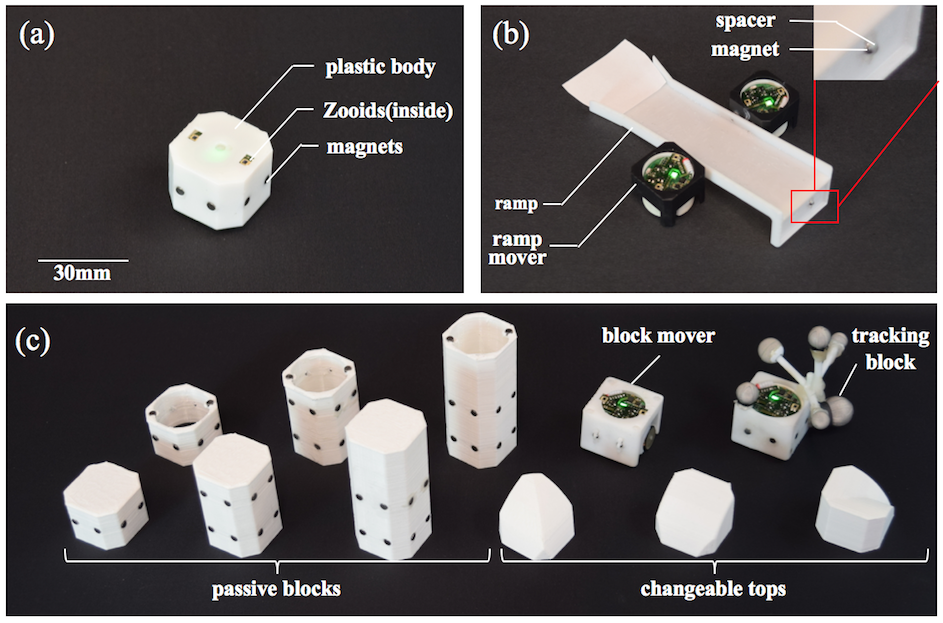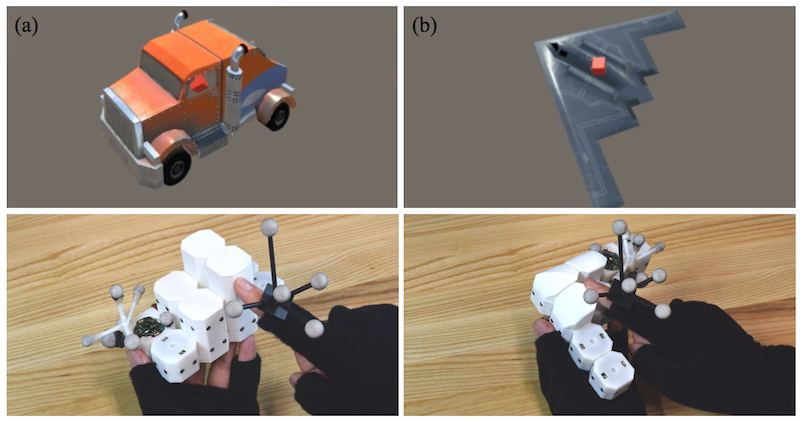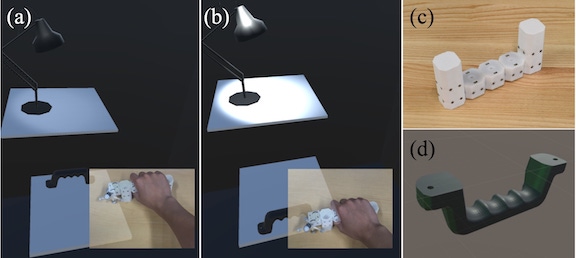Robotic Assembly of Haptic Proxy Objects for Tangible Interaction and Virtual Reality
Yiwei Zhao, Lawrence H. Kim, Ye Wang, Mathieu Le Goc, Sean Follmer

Abstract
Passive haptic proxy objects allow for rich tangible interaction, and this is especially true in VR applications. However, this requires users to have many physical objects at hand. Our paper proposes robotic assembly at run-time of low-resolution haptic proxies for tangible interaction and virtual reality. These assembled physical proxy objects are composed of magnetically attached blocks which are assembled by a small multi robot system, specifically Zooids. We explore the design of the basic building blocks and illustrate two approaches to assembling physical proxies: using multirobot systems to (1) self-assemble into structures and (2) assemble 2.5D structure with passive blocks of various heights. The success rate and completion time are evaluated for both approaches. Finally, we demonstrate the potential of assembled proxy objects for tangible interaction and virtual reality through a set of demonstration.
Video
Implementation
Magnetic Blocks
a) An active block consists of a shell containing a Zooid and magnets distributed around its surface to con- nect with other blocks. b) The ramp is actuated by two Zooids and allows active blocks to climb on top of each other. c) Passive blocks come in various shapes to allow to create more diverse assemblies.

Example Applications
Physica Shape Rendering
Assembled haptic proxy objects allow user to physically manipulate and interact with various virtual objects.

Virtual Light Switch
Moving the assembled proxy switch allows to control the intensity of the light in the virtual world.

Paper
Robotic Assembly of Haptic Proxy Objects for Tangible Interaction and Virtual Reality [PDF]
Yiwei Zhao, Lawrence H. Kim, Ye Wang, Mathieu Le Goc, Sean Follmer
ACM Proceedings of the 2017 International Conference on Interactive Surfaces and Spaces (ISS)